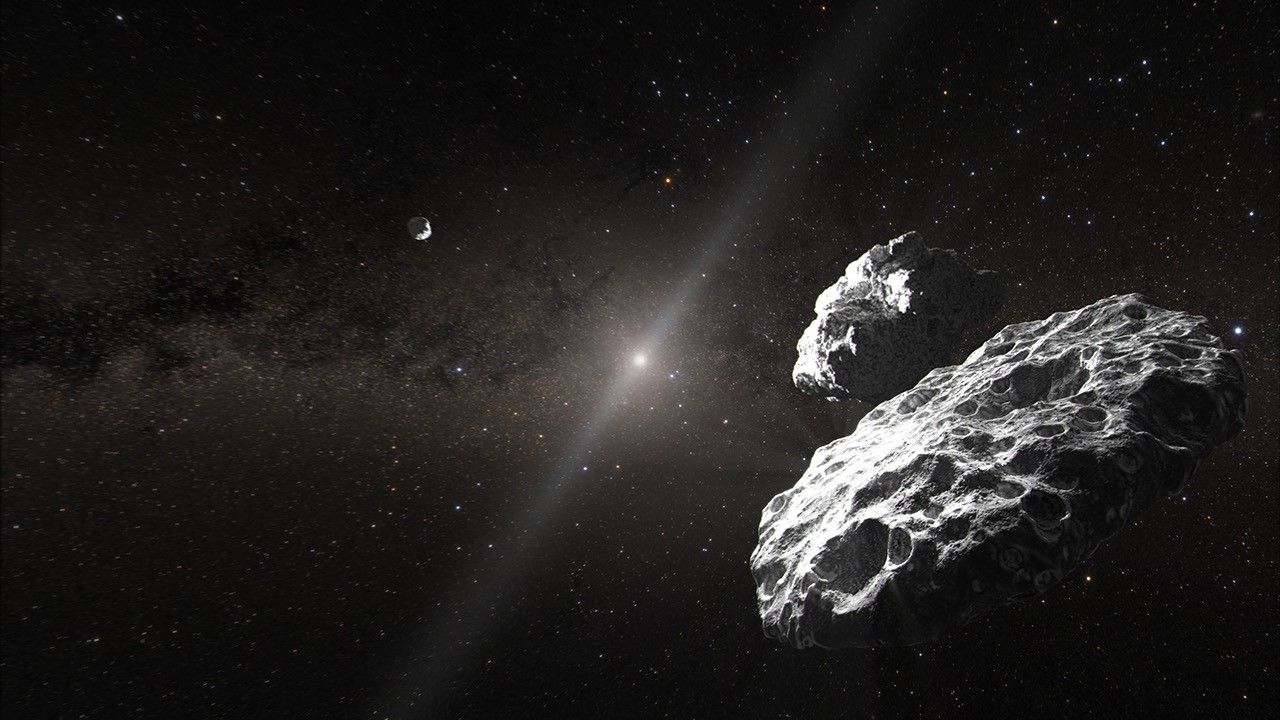Cassini Significant Events 01/27/05 - 02/02/05
February 4, 2005
(Source: Jet Propulsion Laboratory)
The most recent spacecraft telemetry was acquired today from the Goldstone
tracking station. The Cassini spacecraft is in an excellent state of health
and is operating normally. Information on the present position and speed of
the Cassini spacecraft may be found on the "Present Position" web page
located at http://saturn.jpl.nasa.gov/operations/present-position.cfm .
Thursday, January 27:
We are now in the second week of execution of background sequence S08. For
the first time, Cassini acquired Radar data over a region on Titan that has
been previously imaged by the Imaging Science Subsystem and Visual and
Infrared Mapping Spectrometer (VIMS) instruments. This overlapping data is
fundamental to putting the probe-landing site in context with the rest of
Titan.
Meanwhile VIMS performed several stellar calibration observations to
determine the state of the instrument optics and whether decontamination
will be necessary. VIMS also conducted one in a series of mosaics of the
entire ring system while Cassini is near apoapsis. The Magnetospheric and
Plasma Science (MAPS) instruments continued their dawn-side magnetospheric
boundaries campaign.
The Huygens Probe System Engineer and Cassini Outreach team members
participated in a telecon for students working in the Goldstone Apple Valley
Radio Telescope Project (GAVRT). Two hundred students from 15 classrooms
from across the US and in Okinawa, Japan, asked questions about the Huygens
Mission, the science, and careers in space exploration. Students taking part
in GAVRT have access to the dish antenna via the Internet, and have been
gathering data about Saturn's atmosphere and its thermal temperature,
sharing that information with NASA.
A sequence change request for S08 submitted by CDA was approved today.
Commands will be sent to the spacecraft to make CDA "prime" for their
observation on February 16. The commands will be tested in the Integrated
Test Laboratory prior to uplink.
As a note, every day this week the instruments are taking data, the
Navigation team is obtaining Optical Navigation images, and we have on
average one DSN pass a day where we downlink the data. If you don't see
anything listed on a particular day, it's because we are just doing business
as usual and have no special events going on.
Friday, January 28:
The Titan 3 encounter is coming up next week. In preparation for this
event, TOST & HSWT hosted a preview event. This was an open meeting where
science objectives and activities were shared with anyone who was
interested.
Orbital trim maneuver #12 (OTM) was completed on the spacecraft early this
morning. This maneuver in combination with OTM-11 served two purposes. The
first was to return us to the original tour design after Probe release and
relay, and the second was to target the spacecraft for Cassini's fourth
encounter with Titan (T-3) on February 15.
The main engine burn began at 12:15 a.m. Pacific Time. A "quick look"
immediately after the maneuver showed the burn duration was 120.1 seconds
long, giving a delta-V of 18.68 m/s. All subsystems reported a nominal OTM.
Yes, you did notice correctly. The 4th encounter is indeed numbered T-3. If
you go back and check you will see that the first three Titan flybys were
numbered a, b, and c. This was the result of replanning the early part of
the tour in support of the Probe receiver problem.
Tuesday, February 1:
Made astronomy picture of the day again with an image of Iapetus! That's
six since the start of the New Year.
The sequence leads uplinked Instrument Expanded blocks for VIMS today and
performed some memory readouts.
At the first Exploration Conference on "Education for Advocacy: The
Challenge of Sustaining Societal Support for Space Exploration", the Cassini
K-4 Literacy Program was called out as an example of what NASA should be
doing as a program that could produce significant results in the classroom,
reach out to under-served students, and thereby gather long term societal
support for NASA.
Wednesday, February 2:
A delivery coordination meeting was held today for Mission Sequence
Subsystem version 10.5 and Inertial Vector Propagator 10.5.
This was a big day for the Science Planning (SP) folks. The reports from
the port#2 end-to-end pointing validation for S39 and S40 have been
delivered to SP by AACS. The team is currently in the process of preparing
the products to be archived. The wrap-up meeting is scheduled for February
9.
Official port#2 for S41 occurred today as well. The wrap-up meeting is
scheduled for February 16. At that time, all tour sequences will have passed
through the implementation process.
SP hosted a Science In-reach talk on UVIS results from stellar occultations
of Titan.
The S10 SSUP process kicked off today.
And let us not forget about the folks from the Mission Support & Services
Office. During this post-Huygens period, the ground system is definitely not
"quiet". MSSO submitted an extensive list of testing, installations, and
support performed this week. It's good to have these folks working with us!
Wrap up:
That's it for this week.
The Cassini-Huygens mission is a cooperative project of NASA, the European
Space Agency and the Italian Space Agency. The Jet Propulsion Laboratory, a
division of the California Institute of Technology in Pasadena, manages the
Cassini-Huygens mission for NASA's Science Mission Directorate, Washington,
D.C. JPL designed, developed and assembled the Cassini orbiter.





























